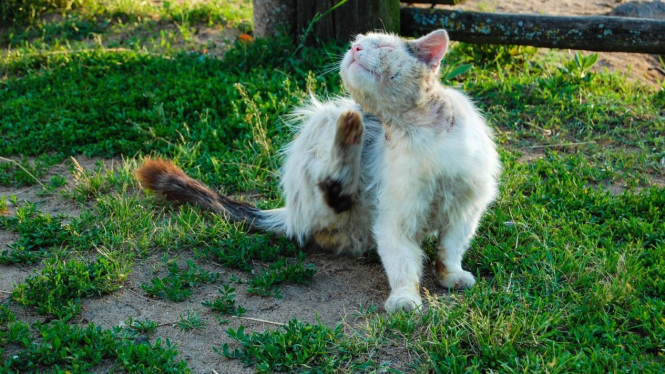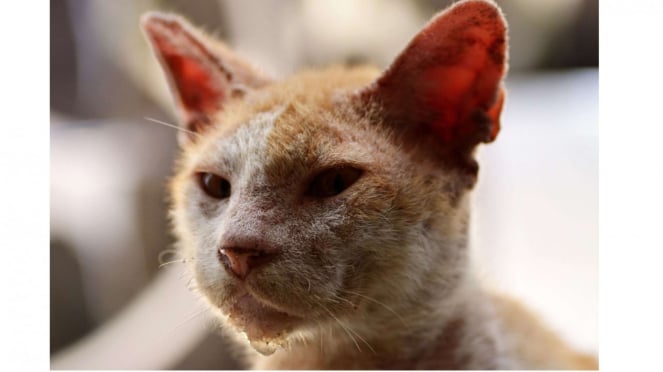Seven Cat Diseases Can Spread and Transmit to Humans
- Pixabay/IgorShubin
VIVA – Although most cat infectious diseases only affect other cats, it turns out that some cat diseases can be transmitted to humans. Diseases that can be transmitted from animals to humans are called zoonoses. The average person's chance of contracting a zoonotic disease from a cat is quite low, but individuals with weakened immune systems can develop the disease.
People who are susceptible to diseases from cats are individuals with immunodeficiency syndrome (AIDS), the elderly, and people who are undergoing cancer chemotherapy or receiving other drugs that can suppress their immune system. Compiled from various sources, here is a review of the diseases spread and transmitted by cats to humans.
1. Bartonella henselae Bacterial Infection
Another type of disease that cats can transmit to humans is a bacterial infection. Cat scratch disease (CSD) is caused by a bacterium called Bartonella henselae, which can be carried in the saliva and fleas of infected cats. As the name suggests, this bacterial infection is usually transmitted from cats to humans through scratches.
However, the disease can also be transmitted through cat bites and licks on open wounds in humans. In cats, the bacteria are most commonly spread through the bite of an infected cat flea and can also be found in the flea's feces, which can be a source of infection if it comes into contact with an open wound on a cat or human.
2. Salmonella Bacterial Infection
Ilustrasi Bakteri Salmonella
- Pixabay
The type of disease that commonly can transmit to humans is salmonellosis. This disease is caused by a group of bacteria called Salmonella. It causes diarrhea, fever, and stomach pain until three days after infections. People usually contract salmonella from eating food that has been contaminated.
These foods include undercooked chicken or eggs, but the disease can be contracted from infected cats, which can carry salmonella and spread through their feces. Salmonella is more commonly found in cats or wild birds and animals that eat raw meat.
3. Parasitic Infection
Ilustrasi kucing sakit (kudis)
- Pixabay/mochawalk
Fleas are the most common ectoparasite of cats, and their bites can cause itching and inflammation in both humans and cats. Fleas can also be vectors of CSD and other zoonotic diseases. Flea-infested cats can become infected with flea-causing tapeworms during treatment. Although rare, people can also get tapeworms from accidentally ingesting fleas.
4. Scabies
Anak-anak terserang wabah scabies
- Ngadri/Kalbar
Scabies, or infection by the sarcoptic mite Sarcoptes scabiei, is another zoonotic external parasite of the cat's skin. Although not as common as flea infestations, these mites can be transmitted from infected cats to humans, where they burrow into the skin and cause painful sores.
Treatment in humans usually includes the use of topical creams to reduce itching, diligent grooming of infected pets, and cleaning of clothing, also bedding carefully.
5. Fungal Infection (Ringworm)
Ringworm or dermatophytosis is not caused by worms at all. Instead, it is a skin infection caused by a group of fungi. Infected cats usually come from neighborhoods with a large number of animals. In cats, ringworm usually appears as dry, gray, scaly patches on the skin.
In humans, ringworm usually appears as round, red, itchy sores with a ring of scales around the edges. Lesions can appear on any part of the body, including the scalp, feet (called "Hong Kong feet"), groin, or beard. Shingles are spread through contact with the skin or fur of an infected animal, either directly or from a contaminated environment.
6. Toxoplasmosis
Toxoplasmosis is caused by the protozoan parasite Toxoplasma gondii. People with weakened immune systems and babies whose mothers were infected during pregnancy can become seriously ill from the parasite. However, most people infected with Toxoplasma gondii show no obvious signs of illness.
Cats can become infected with Toxoplasma gondii by eating infected rodents, birds, or anything contaminated with the feces of other infected animals. Infected cats can transmit the parasite through feces for up to two weeks. Once shed in feces, the parasite must mature for one to five days to cause infection.
7. Rabies
Pemandulan Hewan Cegah Rabies di Bali
- ANTARA FOTO/Nyoman Budhiana
Rabies is a viral disease spread by the bite of an infected animal. While most viruses only infect their natural host species, rabies is a notable exception. Cats are particularly susceptible to rabies, which attacks the central nervous system, causing a range of symptoms. Rabies is almost always fatal.
In humans, rabies infection usually occurs when an infected animal bites a person. To protect human health, laws in many countries require cats to be vaccinated against rabies. To further reduce the risk of rabies, avoid contact with wild and stray animals and seek immediate medical attention if bitten by an animal.



























